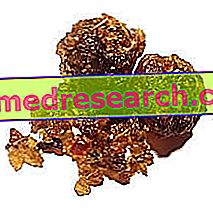A free radical is a particularly reactive molecule or atom that contains at least one unpaired electron in its outermost orbit. Because of this chemical characteristic, free radicals are highly unstable and try to return to equilibrium by stealing from the atom near the electron needed to even out its electromagnetic charge. This mechanism gives rise to new unstable molecules, triggering a chain reaction that, if not stopped in time, ends up damaging the cellular structures.
The most popular free radicals are those with an oxygen content (ROS from Reacting Oxygen Species ) such as the superoxide anion (O 2 -) and hydrogen peroxide (H 2 O 2 ). In the presence of free transition metals (especially iron and copper) these give rise to the hydroxyl radical (OH-), particularly toxic and responsible for lipid peroxidation.
The production of free radicals is a physiological event and normally occurs in cellular biochemical reactions, especially in those that use oxygen to produce energy. The same free radicals can also be produced due to external factors.
Factors responsible for the production of free radicals
ENVIRONMENTAL FACTORS
- Pollution
- Drugs, active and passive smoking, alcohol and drugs
- Ultraviolet rays and ionizing radiation
- Prolonged psychophysical stress (intense physical activity)
- Some additives and toxic substances present in food or developed during their cooking
ENDOGENOUS FACTORS
- Electron transport in mitochondria (aerobic energy production)
- B-oxidation (fatty acid metabolism)
- Cytochrome P450 reactions (metabolism of drugs, toxic substances, etc.)
- Phagocytic cell activity (immune system)
Since it is not possible to prevent its formation, our body has developed its own system of defenses that can neutralize most of the negative effects associated with the production of free radicals.
The detoxification mechanisms:
- the superoxide dismutase converts the superoxide anion into hydrogen peroxide (hydrogen peroxide). This latter molecule is particularly harmful to cells because, in the presence of iron, it releases the hydroxyl radical which is particularly harmful and difficult to control.
- Our body, fortunately, has an enzyme capable of preventing this process. This protein, called catalase, is in fact capable of converting hydrogen peroxide into water and oxygen.
- Finally, glutathione can act alone or become the substrate of various enzymes such as glutathione peroxidase (GPX) and act in a similar way to catalase
If these defenses are insufficient, there are still shelter systems that can mitigate the damage caused by free radicals.
Sports and free radicals
During energy metabolism most of the oxygen combines with the H + ions to form water. A small percentage of O 2, normally between 2 and 5%, escapes this process and contributes to the formation of free radicals.

Anti-oxidant supplement Antiage X115 + Plus
New generation anti-aging supplement. Double Day & Night formulation with high concentration of assets; supports and optimizes antioxidant defenses and stimulates the synthesis of collagen, hyaluronic acid and elastin . " More information "
During a physical exercise the oxygen consumption can increase up to 20 times compared to the rest condition; in particular in active muscles this increase can even be 100 times higher. While on the one hand the increased flow of oxygen is essential to satisfy energy demands, on the other it also considerably increases the production of oxidizing agents. The amount of free radicals produced during an effort is directly proportional to the duration and intensity of the exercise and inversely proportional to the level of training of those who practice it. Physical conditioning improves the body's antioxidant capacity and allows trained athletes to counteract the free radicals produced more efficiently.
However, it can happen that, due to the low level of physical preparation or the excessive intensity and frequency of training, the production of free radicals ends up overcoming the defense capabilities of the organism. For this reason, the intake of vitamins and antioxidants in the form of supplements is an undervalued strategy but particularly effective in improving the athlete's overall performance and state of health.
In the untrained subject subjected to intense physical effort, the excessive production of oxidizing agents causes direct damage to the muscle cell and contributes to the appearance of the classic post-workout muscle soreness. However, regular sporting practice induces an increase in endogenous defenses against free radicals. This explains why athletes generally appear younger and more fit than sedentary peers.
Fight free radicals "



